Best mirrorless cameras in 2022
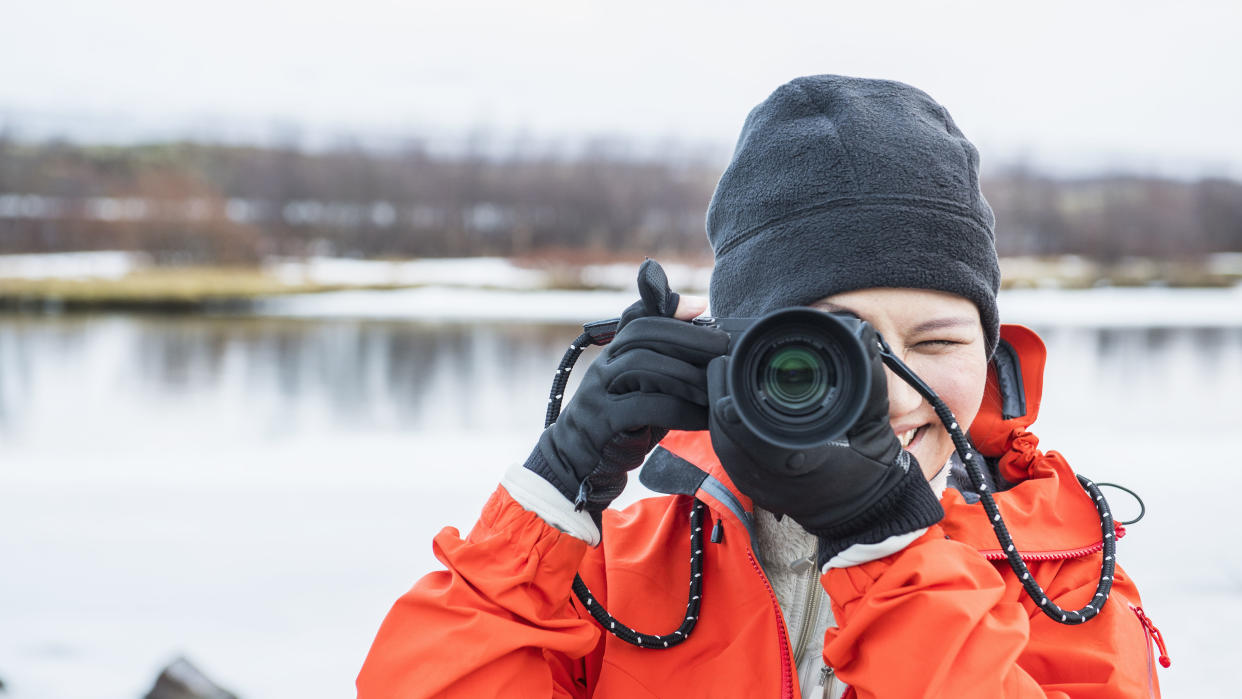
The best mirrorless cameras are able to keep up with you no matter the shooting environment. Despite being around for a some time, mirrorless cameras are proving ever-popular with new and veteran photographers alike. Unlike SLR and DSLR cameras, mirrorless cameras lack a mirror and a viewfinder prism. Instead, they rely upon a small screen in the viewfinder. The reduction in hardware means mirrorless cameras are lighter and more compact, making them easier to carry around.
RELATED ARTICLES
Best DSLR cameras
Best cameras for photos and videos
Best cameras for astrophotography
Best lenses for astrophotography
Best beginner cameras
The best mirrorless cameras offer sharper images with higher resolution, a wider dynamic range, as well as other features that usually surpass the abilities of DSLR cameras. However, not all mirrorless cameras are the same and as such, you'll see a wide range in price too — from a couple of hundred to a couple of thousand.
Furthermore, you will have to choose between Micro Four Thirds, APS-C, and full-frame sensors. Different numbers of compatible lenses are available for each camera, so picking out the best mirrorless camera for you may be more challenging than you expect. That's why we've put together this handy guide.
For astrophotography, the best mirrorless cameras aren't your only option. For astrophotographers who want camera equipment that will maximize detail in the stars check out the best cameras for astrophotography and consider the best lenses for astrophotography.
Best mirrorless cameras in 2022
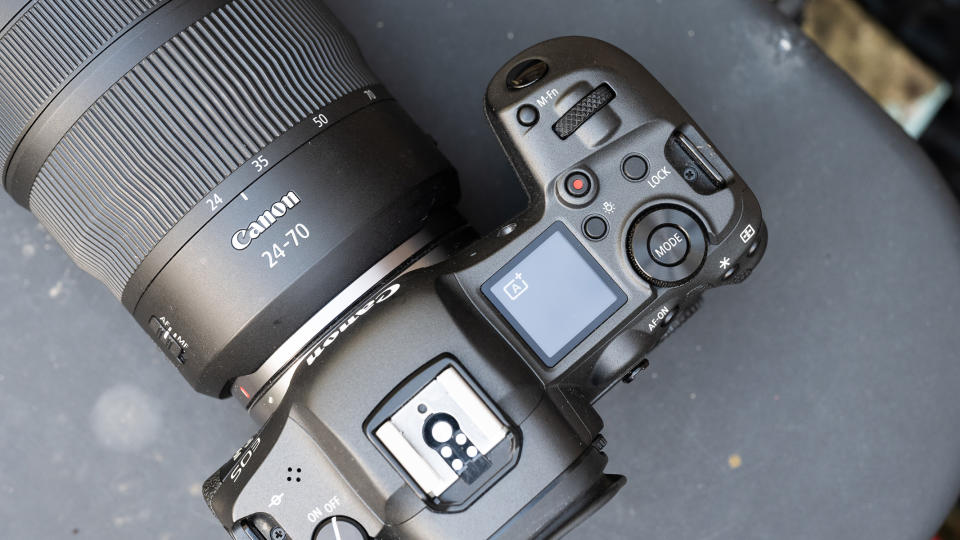
Canon EOS R5
The best mirrorless overall The EOS R5 is a mirrorless powerhouse with huge stills specs and uncropped 8K RAW video
Sensor: Full frame, 45MP | Lens mount: RF (EF/EF-s with adapter) | ISO range: 100-51,200 (50-102,400 expanded) | Video: DCI 8K RAW 30p | Weight without lens: 650g | Memory card slots: CFexpress x 1 and SD UHS-II x 1
Excellent low-light autofocusing
Eight stops of image stabilization
Quite expensive
Reported overheating problems shooting 8K
Advanced and professional users who require excellent image quality for both stills and video will find the Canon EOS R5 well suited. The R5 captures 45MP stills that can easily be cropped and video footage that shoots uncropped 8K RAW at 30fps. Its performance in low light is solid thanks to the -6EV autofocusing detection range. This camera can practically see in the dark. There's low image noise across the ISO sensitivity range thanks to the custom-designed DIGIC X image processor.
The R5 also comes with better dynamic range thanks to the improved Auto Lighting Optimizer (ALO) and Highlight Tone Priority + technology. This makes it easier for those newer to image processing to get clearer contrasted images of dark subjects. Also, due to the wider diameter and closer flange range of the RF mount in the EOS R5, it can take advantage of improved optical designs with sharper results and smaller form factor lenses, making it more portable.
The R5 can use its 5-axis stabilization up to a whopping eight stops, even on lenses without image stabilization because of the in-body image stabilization (IBIS) technology. This IBIS technology works well when shooting video although it doesn't quite perform as well as expected when capturing 8K RAW footage.
During our review of the Canon EOS R5 we found the autofocus system to be one of the fastest we have used and we think the tracking must be best in class as it was spot on.
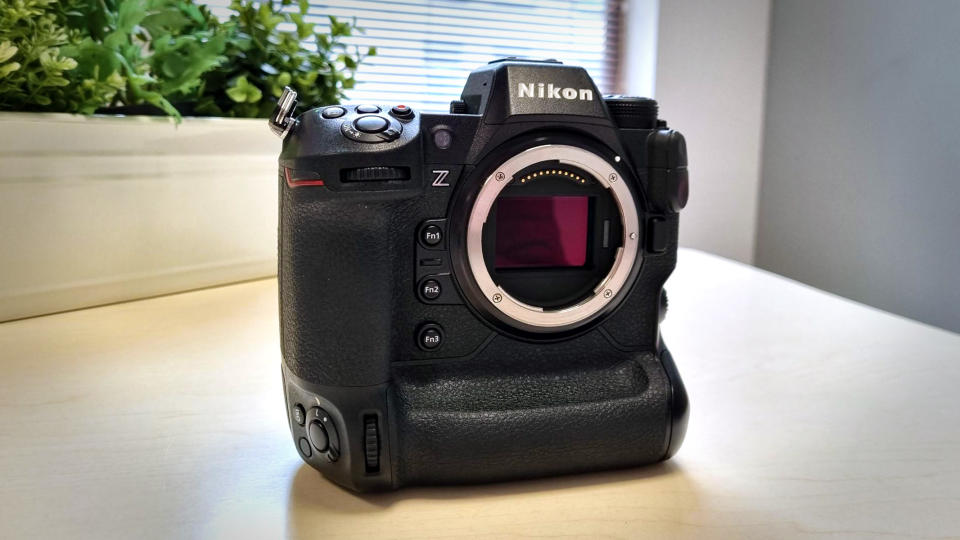
Nikon Z9
Best mirrorless camera ever made and one of the top performing cameras ever made
Sensor: 45.7MP, stacked full-frame | Lens mount: Nikon Z mount | ISO range: 64-256,000 (expandable up to 32-102,400) | Video: 8K 60FPS, 4K 120FPS | Weight without lens: 1340g | Memory card slots: CFexpress type B or XQD card
Fantastic battery life
Excellent build quality
Unrivaled burst shooting speed
On the heavy side
We'd have liked an articulating screen
We recently carried out a Nikon Z9 review, and to say we were impressed is a huge understatement. The only reason it didn't quite get five stars is that its somehow just too good for astrophotographers, it is overkill, and there is no need to spend this type of cash if astro is what you're going to be shooting the most.
That said, if you're into landscapes, portraits, and wildlife photography, with some astro on the side (of course) then this is the camera that puts the competition to shame.
It is simply one of the best Nikon units you can buy if you have around $5500 at your disposal. It is fully weather-sealed and incredibly rugged. Nikon claims it will continue to operate at -10 degrees Celsius, although we didn't test this during our review.
The battery life is exceptional, even when we were shooting with it in the cold for 3-4 hours, including lots of long exposures and regularly changing settings, we only used 20% of the fully charged battery. That is impressive.
The autofocus is very fast, even in low light, giving you the best opportunity to capture fleeting moments at special occasions such as weddings, or at sporting events.
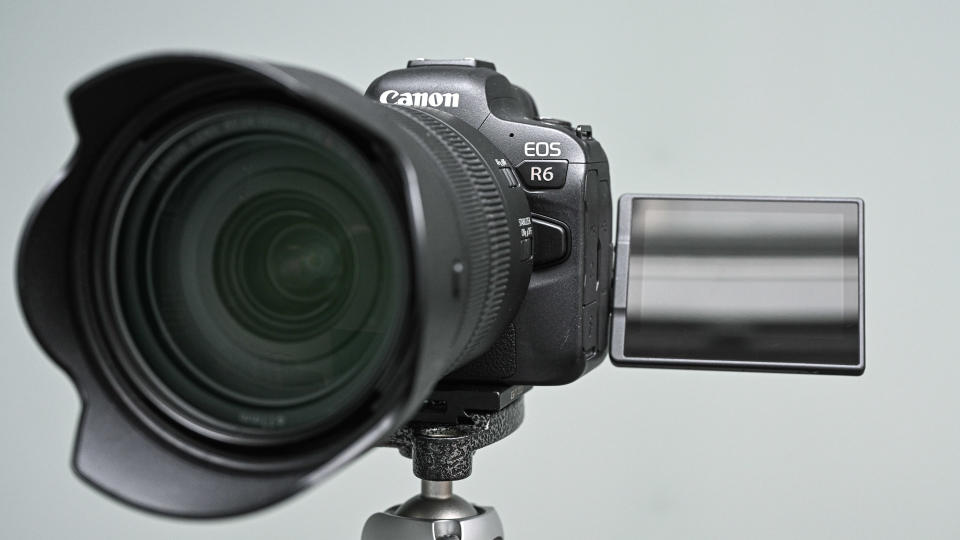
Canon EOS R6
Great low-light autofocus and an impressive ISO range make this ideal for astro
Sensor: Full frame, 20MP | Lens mount: RF (EF/EF-s with adapter) | ISO range: 100-51,200 (50- 204,800 expanded) | Video: 4K UHD 60p | Weight without lens: 598g | Memory card slots: SD UHS-II x 2
Better low light AF than R5
Generous ISO range
Only 4K cropped video
Limited to 20MP stills
The Canon EOS R6 is essentially the R5's little brother so there is naturally a drop in both image quality and price. However, despite a lower image resolution (20.1MP compared to the R5's 45MP) and less detailed electronic viewfinder, it performs better when being used for astrophotography.
It can autofocus down to -6.5EV which is 0.5EV lower than the R5. Having a maximum ISO sensitivity twice as high as the R5, it is more suited to shooting videos of the aurora and other night sky subjects. It's also smaller, lighter, and cheaper than the R5 and the lower photosite count (pixels) means it should be less prone to image noise.
Read our Canon EOS R6 review.
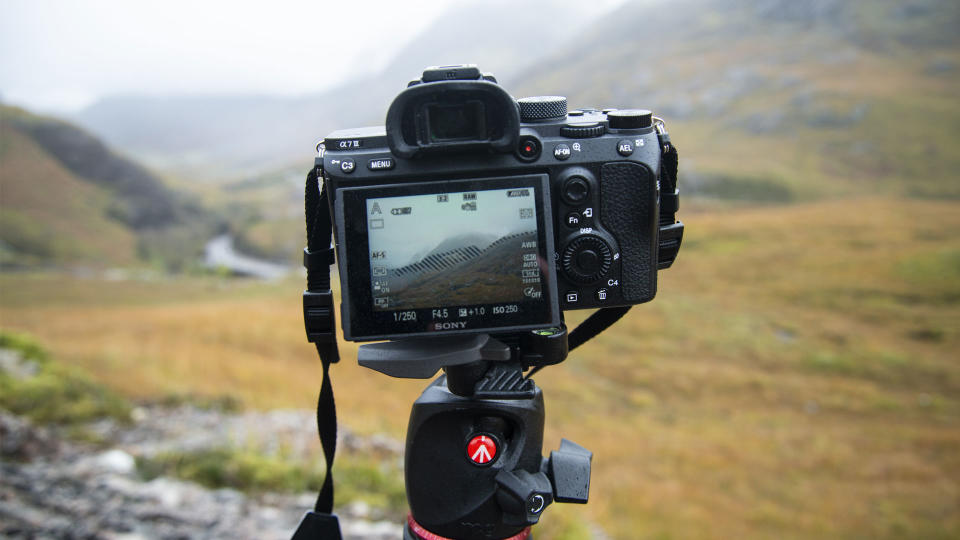
Sony A7 III
An all-round performer good at both stills and video capture, though now superseded by the A7 IV
Sensor: Full frame, 24.2MP | Lens mount: E-mount | ISO range: 100-51200 (expanded to ISO 50-204800) | Video: 4K UHD 30p | Weight without lens: 650g | Memory card slots: SD UHS-II x 2
Excellent performance for the price
Long battery life
Unfriendly menu interface
Tilting rather than vari-angle screen
The key to the A7III's uniqueness lies in its Exmor R image processor which is back-illuminated for improved light collecting ability. This, plus Detail Reproduction and Area-specific Noise Reduction technologies help to maintain clear, noise-free shots even at high ISO values — ideal for astro where ISOs are inherently cranked up high.
It has a 15-stop dynamic range so bright highlights and deep shadows can be rendered equally capably across the frame. A maximum ISO of 51200 (or 204800 for stills) and the integrated Hybrid-Log Gamma picture profile make the camera ideal for night sky shooting for HDR video processing.
Read our Sony A7 III review.
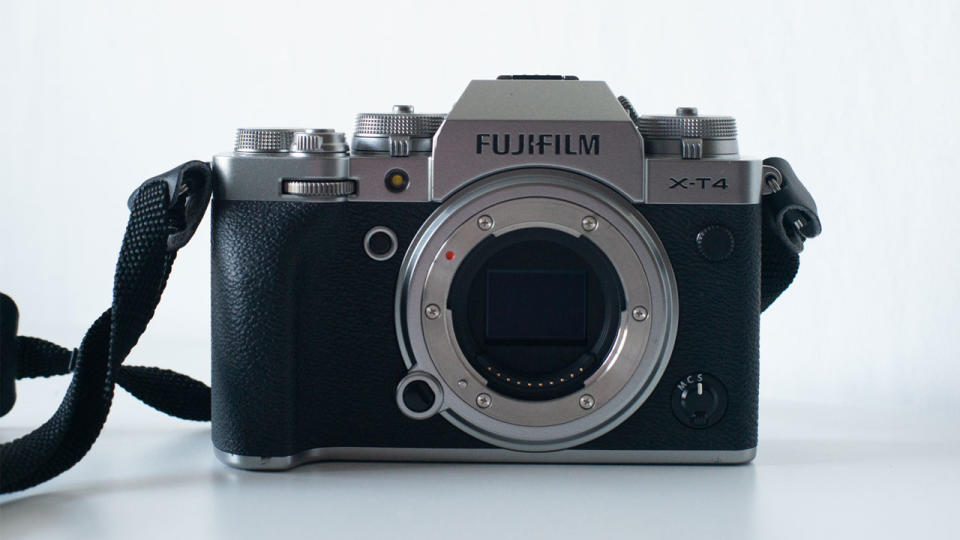
Fujifilm X-T4
One of the best mirrorless cameras for low light autofocusing in a compact size
Sensor: APS-C, 26.1MP | Lens mount: X-mount | ISO range: 160-12800 (extended 80-51200) | Video: DCI 4K 30p | Weight without lens: 526g | Memory card slots: SD UHS-II x 2
Huge 6.5 stops of in-body image stabilization
Vari-angle touchscreen
APS-C crop sensor
Lack of headphone jack
Though an APS-C camera, the X-T4 hits hard with its specs such as uncropped 4K video at 30fps, 26.1MP stills capture, and a nicely detailed electronic viewfinder for more straightforward composition. It's also lightweight and highly affordable, considering the specs, which makes this the ideal camera for those that want lots of features in a small form factor but without the hefty price tag.
The impressive -7EV autofocus range means this camera is top quality when autofocusing in the dark. In our Fujifilm X-T4 review, we were impressed with the insanely high ISO capabilities and thus the camera's low-light performance, making it an excellent choice for astrophotography. However, as with all camera AF range specs, the performance does depend on the lens attached (in this case the XF50mm f/1.0).
Read our Fujifilm X-T4 review.
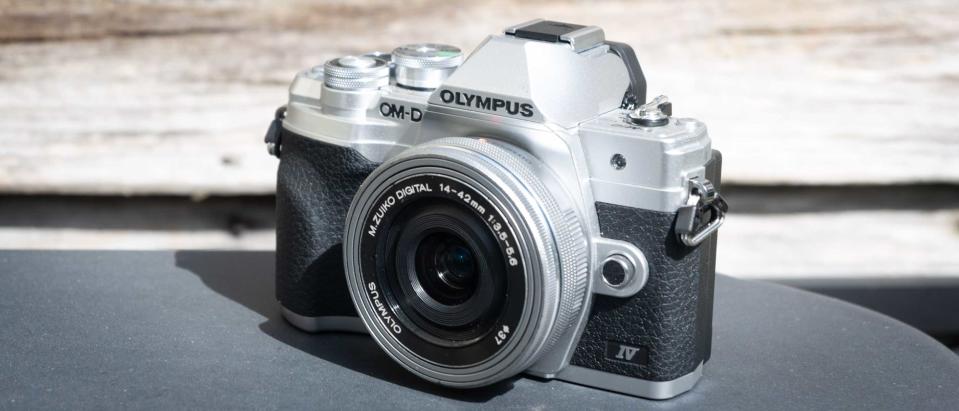
Olympus OM-D E-M10 Mark IV
Unbelievable performance for a Micro Four Thirds camera
Sensor: Micro Four Thirds, 20MP | Lens mount: Micro Four Thirds | ISO range: 200-6400 (extended 64-25600) | Video: 4K UHD 30p | Weight without lens: 383g | Memory card slots: SD, SDHC (UHS-I / II), SDXC (UHS-I / II
Incredibly lightweight and portable
AF system is fast and reliable
Not much room for progression
Plastic feel doesn't feel premium
Isn't weather sealed
A Micro Four Thirds image sensor means less surface area to capture light. Despite this, Olympus has managed to pack a lot into this stylish little camera that fits in your pocket. We have replaced 'version three' of this model with this, version four, thanks to some good upgrades including an improved sensor, quicker autofocus and generally a more refined package.
During our review of the Olympus OM-DE E-M10 Mark IV we liked the well-sculpted and ergonomic right-hand grip which let us operate the chunky camera controls one-handed. The flip-down, 3-inch, responsive touch screen makes it easy to compose shots aimed at unusual angles. It even flips down 180 degrees for V-Logs and selfies. One thing we do miss is weatherproofing, so it can't be used in poor weather conditions, and you have to be mindful of dust ingress.
20MP stills compete with full-frame mirrorless cameras in terms of image resolution and it can even shoot 4K UHD 30p video. Though the ISO range (200-6400) is more limited than other cameras in this roundup although usually, most astro shooters will want to keep ISO as low as possible to avoid image noise which means 6400 (or 25600 expanded) is more than ample.
Read our Olympus OM-D E-M10 review
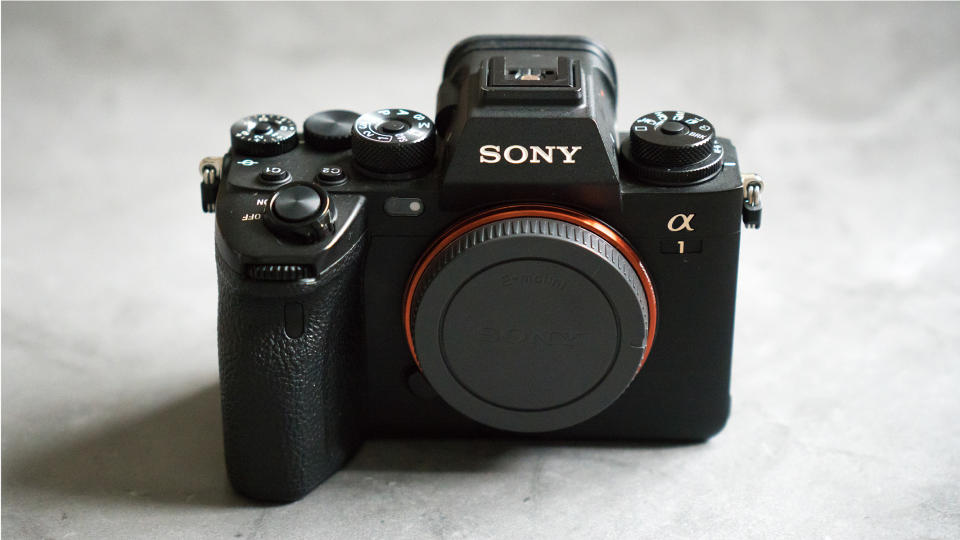
Sony A1
A world-leading mirrorless camera full of insane specs but with a world-leading price to match
Sensor: Full frame, 50MP | Lens mount: Sony E-mount | ISO range: 100-32000 (expanded 50-102400) | Video: 8K 30p | Weight without lens: 737g | Memory card slots: SD UHS-II and CFexpress x 2
Incredibly detailed EVF
Jaw-droppingly detailed stills and video
Incredibly accurate eye af and tracking
Astronomical price
One for advanced/professional users
If you were looking to buy a camera to rule them all, this might be your dream camera, although, as we discussed in our hands-on Sony A1 review, it comes with a huge price tag, so it is likely restricted to professional photographers. A massive 50.1MP stills resolution matched by 8K 30p video, a class-leading electronic viewfinder and in-body image stabilization of 5.5 stops means you'll effortlessly capture every star in the sky. The menu system is one of the best we've seen from Sony.
It has incredible specs and is ideal for astro work. The expandable ISO range up to 102400 allows for some stunning astrophotographs. 15 stops of dynamic range mean those pinpoints of bright, starry light are captured just as easily as the darkest patches of clear skies.
Another neat feature is lossless compressed files. Lossless compressed is practically the same image quality as uncompressed raw files, but the camera finds intelligent ways to get rid of some unnecessary information, thus making the file size about half that of an uncompressed raw file — your storage system and computer processor will thank you for this.
Read our Sony A1 review
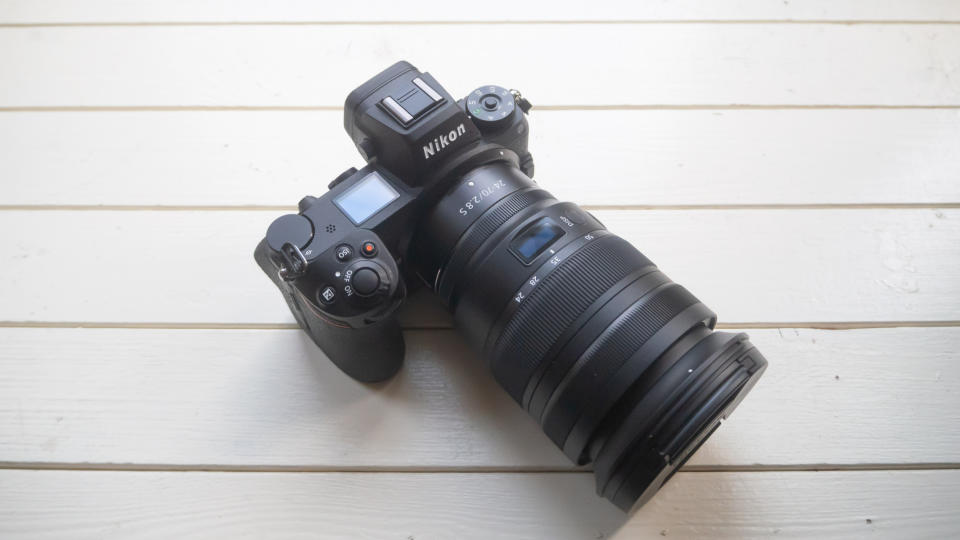
Nikon Z6 II
The latest in the Z6 mirrorless range with a host of new and improved features
Sensor: BSI-CMOS 24.5MP | Lens mount: Z-mount | ISO range: 100-51200 (expanded 50-204800) | Video: 4K 60p | Weight without lens: 1.5lbs/675g | Memory card slots: 1x CFexpress/XQD, 1x UHS-II SD
A good all-rounder
Small but welcome improvements over the Z6.
Improvements could have been made even better
Plenty of competition
Although almost aesthetically identical to the aforementioned Nikon Z6, the Nikon Z6 II is a small, but welcome enhancement. As we discussed in our Nikon Z6 II review we wouldn't advise upgrading from one to the other if you already own the Z6 as the differences aren't big enough to warrant the change.
Some practical updates include a CF Express compatible second memory card slot, enhancing the capacity and speed of file writing. It also features a dual image processor and the burst rate has been increased from (an already impressive) 12FPS to 14FPS. The autofocus is also noticeably snappier and has a better range of shutter speeds, something handy for astrophotographers and creative photographers.
Videographers will like the introduction of 60FPS at 4K video shooting, provided they don't mind a little extra weight.
The Nikon Z6 II is cheaper than its direct rival, the Canon EOS R6 and so would be a good choice for intermediate and professional shooters looking to move over to mirrorless.
Read our Nikon Z6 II review
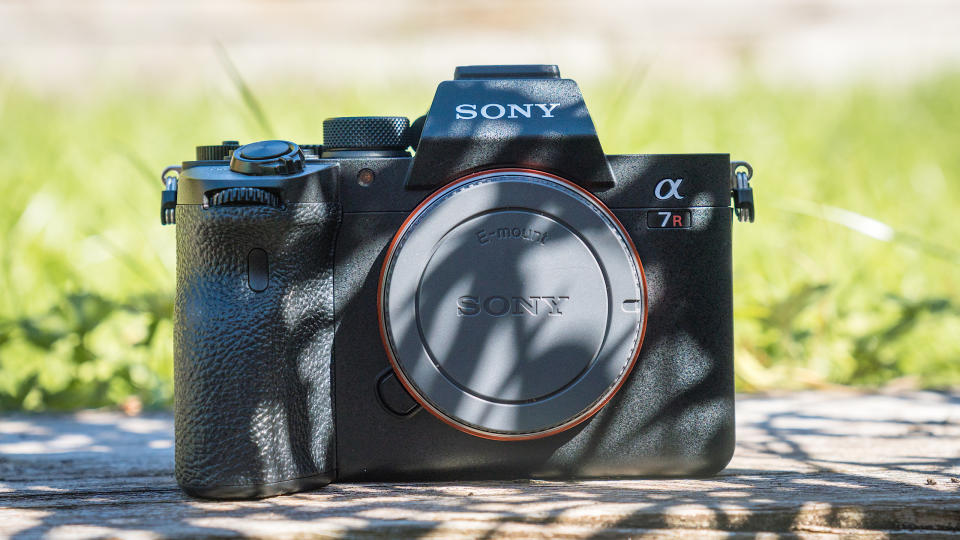
Sony A7R IV
The world's unrivaled highest resolution full frame mirrorless camera
Sensor: Full frame, 60MP | Lens mount: E-mount | ISO range: 100-32000 (expanded 50-102400) | Video: 4K UHD 30p | Weight without lens: 665g | Memory card slots: SD UHS-II x 2
Incredible stills resolution
Brilliant autofocusing system
Limited ISO range considering price
Only 4K crop video
If it's unparalleled detail you want to capture, then pay attention to this record-breaking Sony mirrorless camera. The image sensor in the A7R IV is capable of capturing huge 61MP stills images which at the time of writing is the highest resolution stills in a full-frame camera. Strangely, this doesn't transfer to video with it limited to 4K UHD 30p maximum footage capture, but that's still good enough for most shooters.
We tested the capabilities of this camera in our hands-on Sony A7R IV review, and we were wowed with autofocus which performed faultlessly, including the eye-detection. Even when we tested this functionality using a black cat as our subject, where many cameras wouldn't even recognize that there was a face in the frame, it tracked its eyes flawlessly, impressive.
The A7R IV performs very well in low light, making it a great option for astrophotography, but be mindful that the ISO range tops out at about 32000. Still, you won't get a bigger or more detailed image of the galaxies elsewhere, than you can with the A7R IV.
Read our Sony A7R IV review
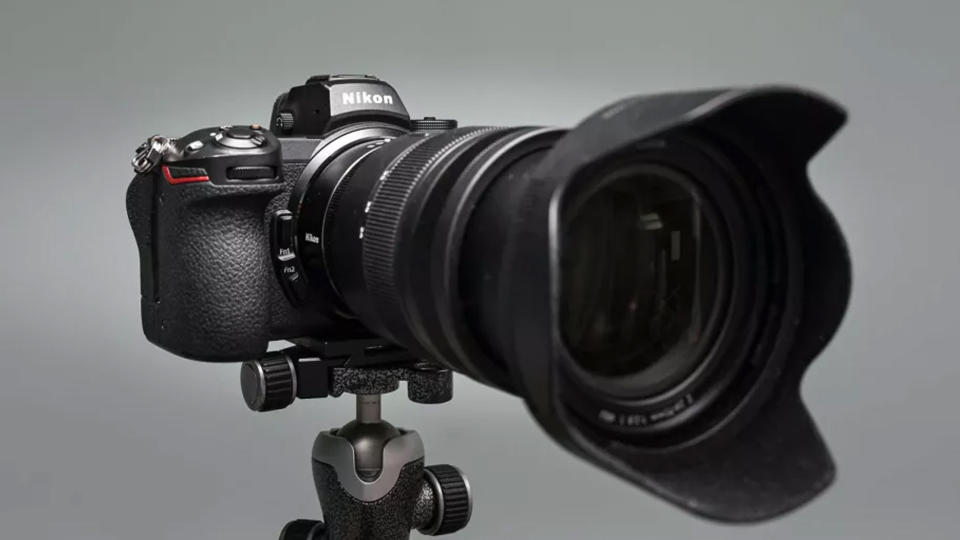
Nikon Z7 II
A brilliant all rounder and great for astro, the reasonably priced Z7 II competes with the most expensive models
Sensor: Full frame, 45.7MP | Lens mount: Z-mount (F-mount with adapter) | ISO range: 64-25600 (expanded <64-102400) | Video: 4K UHD 60p | Weight without lens: 615g | Memory card slots: Multi slot SD UHS-II, CFexpress, XQD x 2
Great all-round performance
Sturdy construction and weather sealed
Multi slot memory card port
Not the best at anything
LCD screen is tilt-only
The Nikon Z7 II turned things up a notch from the Z7 with better image processing and more advanced compatibility. Released in 2020, it provides extremely sharp 45MP stills and high-quality, smooth 4K UHD 60p video.
Shooting for longer periods is possible thanks to more efficient energy consumption. Its sturdy magnesium alloy body and complete weather sealing mean it can be exposed to all kinds of weather without worry. Paired with the razor-sharp Z series lenses, it's priced mainly at serious and professional shooters.
In our Nikon Z7 II review, we noted that it feels like a mini Nikon DSLR, with similar button placement, controls and command dials, so it should feel familiar if you're making the switch between the two.
We were particularly impressed with its low light capabilities and how good it was when shooting astro. Although the screen is tilt-only, we didn't mind, as it means all of the buttons are still at a fingertips reach in the dark, so no need for headlamps or torches which may damage your night vision. Its superb handling of image noise really stood out too, and we found noise to be almost unnoticeable until we'd pushed it up to ISO2500.
Read our Nikon Z7 II review
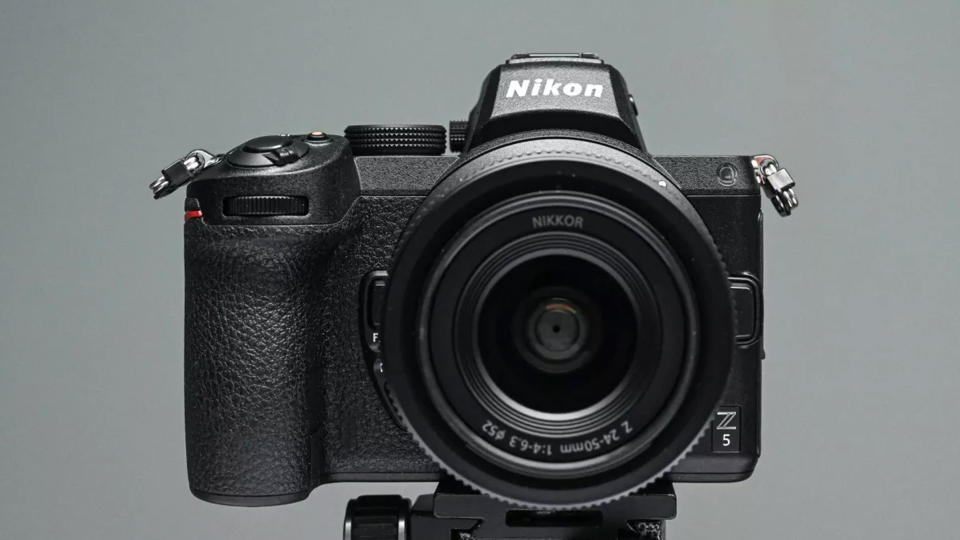
Nikon Z5
A compact entry-level full frame mirrorless camera with a good set of features
Sensor: Full frame, 24.3MP | Lens mount: Z-mount (F-mount with adapter) | ISO range: 100-51200 (expanded 50-102400) | Video: 4K UHD 30p | Weight without lens: 590g | Memory card slots: SD UHS-II x 2
Affordable full-frame mirrorless
Excellent ISO range
Too middle-ground for some
Cropped 4K feels dated
Full-frame cameras are notoriously expensive and often perceived as the reserve of advanced and professional photographers. This is why beginners and those still learning the ropes of photography tend to opt for APS-C crop sensors. However, due to its affordability, the Nikon Z5 is probably the world's most accessible full-frame mirrorless camera. During our Nikon Z5 review we thought that it is a very capable camera for anyone who wants to leap to a full-frame or mirrorless system but doesn't want to break the bank, apart from those who will be mainly shooting action, wildlife or sports.
The Z5's features aren't class-leading. Cropped 4K video is a little dated now for full-frame cameras. The viewfinder matches the resolution of the Z7 II but is outperformed by many competitors. Although the stills top out at 24.3MP, this isn't a show stopper as for low light shooting and astrophotography, lower resolution full-frame sensors tend to produce less unwanted image noise.
Read our Nikon Z5 review.
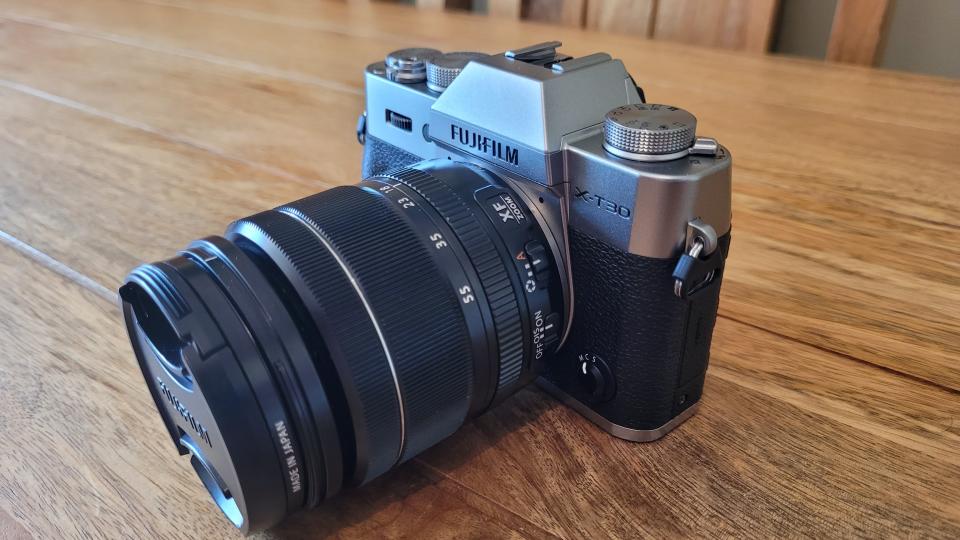
Fujifilm X-T30 II
The tiny Fujifilm X-T30 II is a great generalist camera at an affordable price
Sensor: APS-C 26MP | Lens mount: Fujifilm X-mount | ISO range: 160-12800 (expanded 80-51200) | Video: 4K DCI/UHD at 30p, 25p, 24p | Weight without lens: 383g | Memory card slots: 1 x SD / SDHC / SDXC
Very light and compact
Excellent connectivity
Fast auto-focus
Battery life isn't great
Tilt rather than articulated screen
Menu takes a bit of getting used to
In our review of the Fujifilm X-T30 II, we found this stylish little camera to be an excellent option for taking everyday snaps, capturing fast action with the 20FPS electronic shutter, taking traveling, or capturing landscapes with exceptional color richness and detail. Thanks to intelligent shooting, you can achieve fantastic results straight out of the box just by using the AUTO mode. It sits at an affordable price point when set alongside comparable models.
The file transfer between the XT-30 II and a smartphone or tablet couldn't be more straightforward. It takes two clicks on the Fujifilm Camera Remote App. You can also control the camera's exposure settings and shutter using your phone, this could be handy if you're trying to get a candid photo of birds and other wildlife without disturbing them or for making sure everyone is in shot in a family photo without having to run back and forth.
It doesn't have the best battery life, rated at 380 shots, but the batteries are tiny and light, so adding a few spares to your kit bag for a full day of shooting is not a problem.
Read our Fujifilm X-T30 II review
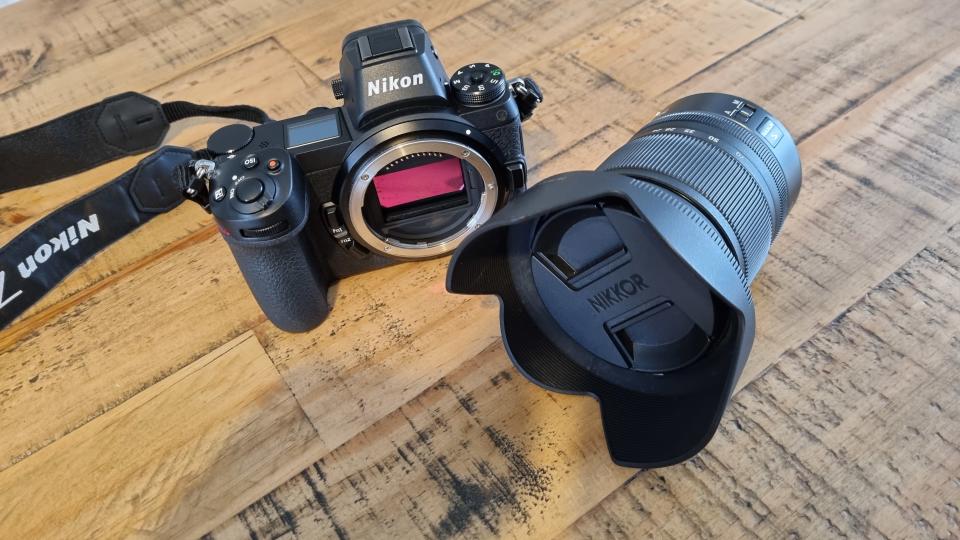
Nikon Z6
One of Nikon’s earliest mirrorless cameras actually outperforms many other mirrorless for astro
Sensor: Full frame, 24.5MP | Lens mount: Z-mount (F-mount with FTZ adapter) | ISO range: 100-51200 (expanded 50-204800) | Video: 4K UHD 30p | Weight without lens: 585g | Memory card slots: SD UHS-II x 1 and CFexpress/XQD x 1
Massive ISO range for age
Low image noise
Photo resolution isn’t huge
Cropped 4K video
The Z6 is one of two of Nikon's earliest attempts at mirrorless cameras and boy did they get it right, it is an extremely capable camera. It's the lower resolution version of its bigger-bodied, and more expensive, sibling (the Nikon Z7) but reaps the rewards in terms of low image noise, especially when shooting at its high ISO sensitivities. That is why we included it in our best cameras for astrophotography guide after reviewing the Nikon Z6, and it also features in our best cameras guide.
Though cropped, the 4K UHD 30p video was impressive at its release date in 2018 and is still not to be sniffed at today. It gives fine detail, has a fast refresh rate and the autofocus is fast.
If you're serious about astrophotography, landscapes, or even portraits, then the Z6 is the ideal mirrorless. What it lacks in sensor size and burst shooting, it certainly makes up for in image stabilization, ISO capabilities, and pure handling feel.
Read our Nikon Z6 review.
How we test the best mirrorless cameras
To guarantee you're getting honest, up-to-date recommendations on the best cameras to buy here at Space.com, we make sure to review every camera thoroughly to test each product fully. Each camera is reviewed based on many aspects, from its construction and design, to how well it functions as an optical instrument and its performance in the field.
Each camera is carefully tested by our expert staff or knowledgeable freelance contributors who know their subject areas in depth. This ensures fair reviewing is backed by personal, hands-on experience with each camera and is judged based on its price point, class and destined use. For example, comparing a 60MP full-frame mirrorless camera to a sleek little crop-sensor DSLR wouldn’t be appropriate, though each camera might be the best product in its class.
We look at how easy each camera is to operate, whether it contains the latest up-to-date imaging technology, whether the cameras can shoot high-quality stills photos and high-resolution video, and also suggest if a particular camera would benefit from any additional kit to give you the best viewing experience possible.
With complete editorial independence, Space.com are here to ensure you get the best buying advice on cameras, whether you should purchase an instrument or not, making our buying guides and reviews reliable and transparent.
Best mirrorless cameras: What to look for
Despite our top 13 models of mirrorless cameras highlighting a choice of options to suit different needs, there are still a few key aspects to consider before deciding which camera to go for. Decide whether stills photography will be the primary use or if movie-making is more critical as some models favor one discipline over the other. If the answer is that you will use both equally, look to get a model that produces high-resolution stills and movie footage, preferably uncropped video too for maximum flexibility.
Related Articles
Best headlamps for stargazing and low light scenes
Best cameras for astrophotography
Best telescopes for viewing planets
A hugely important consideration when buying a mirrorless system is how many compatible lenses are available so you're not restricted when you further your photography and want versatility in your kit bag. A good range of wide-angles, zooms, primes, telephotos, macros, and other specialist lenses maximize the potential and keep the interest of those who like to experiment in multiple disciplines. For example, users who like to shoot wildlife, landscapes, astrophotography, sports, portraits, and macro subjects might want to consider a mirrorless camera with a broader selection of lenses available to complement it.
The most decisive factor in buying the best mirrorless cameras for most people is undoubtedly price. Looking at an older model, you will typically get a lower price but miss out on newer technology, like improved image stabilization and more detailed viewfinders. However, newer models aimed at professionals will have features that outshine ones for beginner and intermediate photographers - but will also cost much more. It is important to weigh up your budget and what features you will need for your style of photography and the subjects you will be shooting in the long run.

